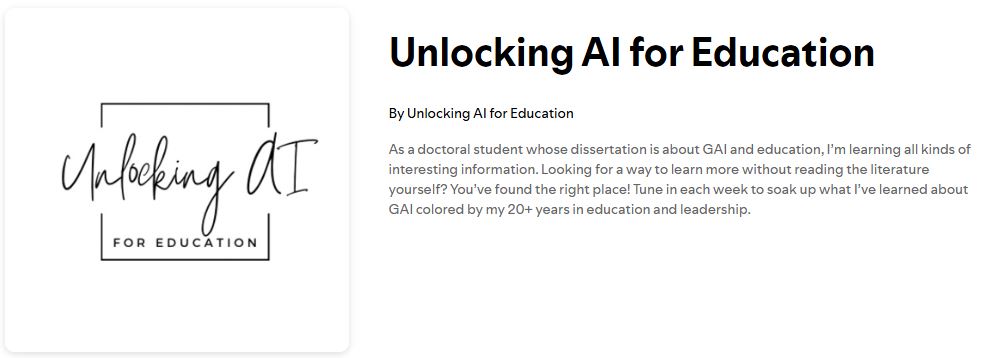In today’s technology-driven world, terms like “Artificial Intelligence” (AI) and “Machine Learning” (ML) are frequently used interchangeably.
They are similar… but they are not the same.
While they are interconnected, they represent distinct concepts within the field of computer science.
This article delves into the nuances of AI and ML, providing an in-depth exploration of their definitions, histories, methodologies, and real-world applications.
Toward the end of the article, we’re also going to look at how companies are combining the two in order to create powerful mechanisms for growth.
Pace yourself. This article is a bit technical in some sections, but I think it’s broken down simply enough for anybody to understand.
Defining Artificial Intelligence and Machine Learning
Artificial Intelligence (AI) refers to the simulation of human intelligence in machines programmed to think, reason, and learn.
AI encompasses a broad spectrum of technologies that enable machines to perform tasks typically requiring human intelligence, such as decision-making, speech recognition, and problem-solving.
AI systems can be classified into two primary categories:
- Narrow AI: Also known as “Weak AI,” this refers to AI systems designed to perform a specific task (e.g., virtual assistants like Siri or Alexa).
- General AI: Also known as “Strong AI,” this refers to AI systems with the ability to understand, learn, and apply knowledge across a wide range of tasks, mimicking human cognition. General AI remains largely theoretical.
Machine Learning (ML) is a subset of AI that involves developing algorithms enabling computers to learn from and make predictions or decisions based on data.
Unlike traditional programming, where specific rules dictate outcomes, ML systems improve their performance as they process more data.
ML is divided into three primary types:
- Supervised Learning: The algorithm is trained on labeled data, making predictions or classifications (e.g., spam email detection).
- Unsupervised Learning: The algorithm identifies patterns in unlabeled data (e.g., customer segmentation).
- Reinforcement Learning: The algorithm learns through trial and error, receiving rewards for correct decisions (e.g., autonomous vehicle navigation).
Historical Evolution of AI and ML
Artificial Intelligence History:
The concept of AI dates back to ancient myths and philosophical musings about artificial beings with human-like capabilities.
However, the formal field of AI research emerged in the mid-20th century:
- 1956: The term “Artificial Intelligence” was coined by John McCarthy during the Dartmouth Conference, marking the birth of AI as a scientific discipline.
- 1960s-1970s: Early AI research focused on symbolic reasoning and problem-solving (e.g., the development of expert systems).
- 1980s: AI experienced a resurgence with the advent of machine learning techniques and increased computational power.
- 1990s-2000s: Breakthroughs in natural language processing (NLP) and computer vision enabled more practical applications (e.g., IBM’s Deep Blue defeating chess champion Garry Kasparov in 1997).
- 2010s-Present: Deep learning, a subfield of ML inspired by neural networks, has driven significant AI advancements, from language translation to medical diagnosis.
Machine Learning History:
ML’s origins are intertwined with AI but gained independent prominence through statistical methods and computational advancements:
- 1940s-1950s: Early work on neural networks began with McCulloch and Pitts’ model of artificial neurons.
- 1959: Arthur Samuel coined the term “machine learning” while developing a program that could play checkers.
- 1980s: The development of backpropagation algorithms allowed neural networks to improve their performance.
- 1990s: The emergence of support vector machines (SVM) and decision trees advanced classification tasks.
- 2010s: The rise of deep learning, fueled by large datasets and powerful GPUs, revolutionized fields like image and speech recognition.
Methodologies and Techniques
AI Methodologies:
AI encompasses diverse approaches, including:
- Symbolic AI: Using logic and rules to encode knowledge (e.g., expert systems).
- Machine Learning: Statistical models enabling systems to learn from data.
- Natural Language Processing (NLP): Analyzing and generating human language.
- Computer Vision: Interpreting and processing visual information.
ML Techniques:
ML relies on various techniques to train models and make predictions:
- Linear Regression: Predicting outcomes based on linear relationships.
- Decision Trees: Using tree-like models for decision-making.
- Neural Networks: Mimicking biological neurons to model complex patterns.
- Ensemble Methods: Combining multiple models to improve accuracy (e.g., random forests).
Real-World Applications
Applications of Artificial Intelligence:
- Healthcare: AI aids in medical diagnosis and personalized treatment plans.
- Finance: Fraud detection and algorithmic trading.
- Transportation: Autonomous vehicles and traffic management.
- Entertainment: Personalized content recommendations (e.g., Netflix).
Applications of Machine Learning:
- Image Recognition: Identifying objects in images (e.g., facial recognition systems).
- Natural Language Processing: Language translation and sentiment analysis.
- Predictive Analytics: Forecasting market trends and customer behavior.
- Speech Recognition: Voice assistants like Google Assistant and Amazon Alexa.
How Companies Are Combining Artificial Intelligence and Machine Learning
In recent years, companies across various industries have increasingly combined Artificial Intelligence (AI) and Machine Learning (ML) to drive innovation, improve efficiency, and deliver personalized experiences.
The next section explores how businesses are integrating these powerful technologies, providing real-world examples of their transformative impact.
Understanding the Synergy Between AI and ML
As explained earlier, AI refers to machines simulating human intelligence, ML involves training algorithms to learn from data and make predictions.
Combining AI and ML enables systems to perform complex tasks autonomously while continuously improving through data analysis.
This integration enhances decision-making, automation, and customer engagement.
How Companies Are Merging AI and ML
- Personalized Customer Experiences
Many companies use AI and ML together to deliver highly personalized customer interactions.
By analyzing vast datasets, businesses can predict customer preferences and customize offerings in real time.
Example: Amazon uses AI and ML to power its recommendation engine.
By analyzing browsing history, purchase behavior, and user preferences, Amazon provides personalized product suggestions that enhance customer satisfaction and drive sales.
- Healthcare Innovations
In the healthcare industry, combining AI and ML accelerates diagnostics, drug discovery, and personalized medicine.
These technologies analyze medical data to identify patterns and deliver precise outcomes.
Example: IBM Watson Health uses AI and ML to assist in medical diagnostics.
By processing massive datasets, it identifies potential diagnoses and suggests tailored treatment plans, supporting healthcare professionals in providing accurate care.
- Financial Services and Fraud Detection
Financial institutions leverage AI and ML to detect fraudulent activities and optimize decision-making processes.
These technologies analyze transaction patterns in real-time, identifying anomalies that may indicate fraud.
Example: JPMorgan Chase employs AI and ML to monitor transactions and detect unusual behavior.
This proactive approach helps prevent fraud and ensures the security of customer accounts.
- Autonomous Vehicles
AI and ML play a crucial role in the development of self-driving cars.
These vehicles rely on advanced algorithms to interpret sensor data, navigate roads, and make real-time driving decisions.
Example: Tesla integrates AI and ML in its Autopilot system.
The technology processes data from cameras, radar, and other sensors, enabling features like lane-keeping, adaptive cruise control, and autonomous navigation.
- Supply Chain Optimization
Companies enhance supply chain efficiency by using AI and ML to forecast demand, optimize routes, and manage inventory.
This reduces operational costs and improves delivery accuracy.
Example: Walmart applies AI and ML to predict product demand and manage inventory.
By analyzing consumer trends and external factors, the company ensures optimal stock levels and minimizes waste.
- Natural Language Processing (NLP) for Customer Support
AI and ML power intelligent chatbots and virtual assistants that handle customer inquiries, providing quick and accurate responses while reducing the need for human intervention.
Example: Google utilizes AI and ML in its Google Assistant. The assistant understands natural language queries, provides information, and performs tasks like scheduling and smart home control.
Future Trends in AI and ML Integration
As AI and ML technologies evolve, their integration will continue to shape industries and consumer experiences.
Emerging trends include:
- Edge AI: Processing data closer to the source, enabling faster decision-making.
- Explainable AI (XAI): Enhancing transparency in AI-driven decisions.
- AI-Driven Automation: Increasing efficiency through automated workflows and decision-making.
AI in Education
Schools are also starting to explore AI and what it can do for schools.
Those schools, districts, and states that are not exploring it are going to be left behind as the next generation of students are accepting the change with open arms.
If you’re a leader in the education sector and AI implementation is something that concerns you, Unlocking Education was recently launched to help educational leaders navigate this change.
Conclusion
While Artificial Intelligence and Machine Learning are closely related, they represent distinct areas of technology.
Companies across industries are harnessing the combined power of AI and ML to revolutionize their operations and customer experiences.
From personalized recommendations to autonomous vehicles and advanced diagnostics, the integration of these technologies is transforming how businesses operate and interact with consumers.
As AI and ML continue to advance, their combined capabilities will unlock new possibilities and reshape the future of innovation and efficiency.
Artificial Intelligence and machine learning systems will continue to evolve and as companies learn to combine them into powerful tools, their impact on society will grow, shaping industries and daily life in unprecedented ways.
The world is changing at an unprecedented rate so prepare yourself for change because it’s coming fast.
AI In Education:
To join the conversation on Facebook please check out our growing AI in Education Facebook Group.
For more information about AI and GAI in the education sector, please visit our website Unlocking Education.
If your a podcast junkie (like I am) and enjoy this topic, my wife has a podcast all about AI in education.
Feel free to check it out below and leave a review (if you’re so inclined).
If you’d like a personal relationship with Jesus Christ, visit our salvation page.
God Bless,

Jason and Daniele



